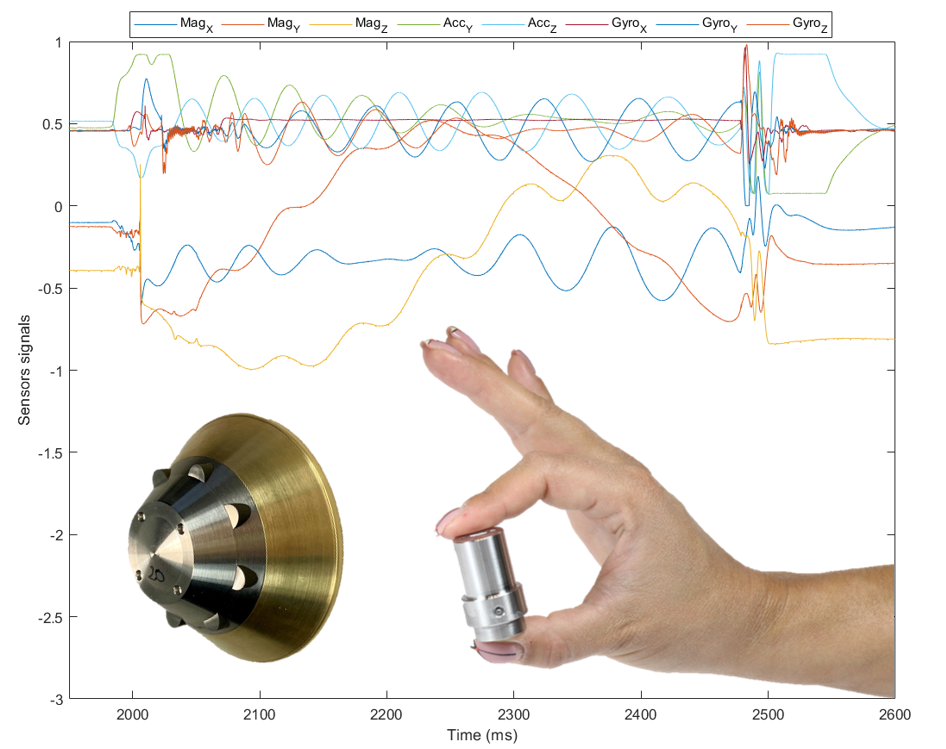It all happened in the blink of an eye, and it’s all on camera. This video has been slowed down 60 times – the actual flight lasted just half a second.
This activity is part of a series of flight experiments with a scaled-down version of the ExoMars landing module – measuring just 8 cm in diameter compared to the actual 3.8-metre spacecraft that will carry the Rosalind Franklin rover.The tiny replica of the Entry, Descent and Landing Module (EDLM) blasts off from a bore gun faster than a speeding bullet.
These tests provide critical data on how the spacecraft will behave during its entry into the martian atmosphere. Following a two-year journey to the Red Planet, the ExoMars descent module will approach Mars at a speed of 21 000 km per hour, relying on heat shields, parachutes and retro rockets to land safely.

Scaled-down test model of the ExoMars Entry Descent and Landing Module, measuring just 8 cm in diameter. Credits: ISL.
These simulated flights at reduced scale offer an efficient and economical method to anticipate the reentry behaviour and stability of the module before launch.
Setting
The first set of tests took place in March at the French-German Research Institute of Saint-Louis (ISL), France, a research centre with facilities for investigating the aerodynamics of vehicles like reentry capsules.
Engineers equipped the mini ExoMars landing capsule with internal electronics to monitor its 200-metre flight path. The test models were mounted in special sabots that detached from the capsules when fired from the powder gun. Test speeds ranged from 1800 to 4300 kilometres per hour.
Shooting technique
Specialised tracking technology allowed cameras and instruments to follow the incredibly fast object throughout its entire flight.

Free-flight tests at the open range test site. The model flies generating a supersonic wake and leaving behind the sabot. Credits: ISL.
The team used 20 models during the tests. Each model carried several sensors to collect flight data. Teams used shadowgraph imaging, magnetometers, accelerometers, gyroscopes, and radar to analyse the capsule’s movement, trajectory and stability.
The small casing shown in the hand of the image below houses the entire electronic onboard system: data logger, sensors and battery. This casing fits inside the probe. When the miniature space capsule is launched, all sensors begin recording flight data. It is a robust, minituarised piece of technology capable of withstanding up to 17 000G of acceleration.
Diagram with signals and data from the test flight. The graphic shows sharp changes around the exit and impact points, and also tracks the behaviour of the capsule during flight. Credits: ISL

Free-flight test range from above at French-German Research Institute of Saint-Louis, France. Credits: ISL




Discussion: no comments